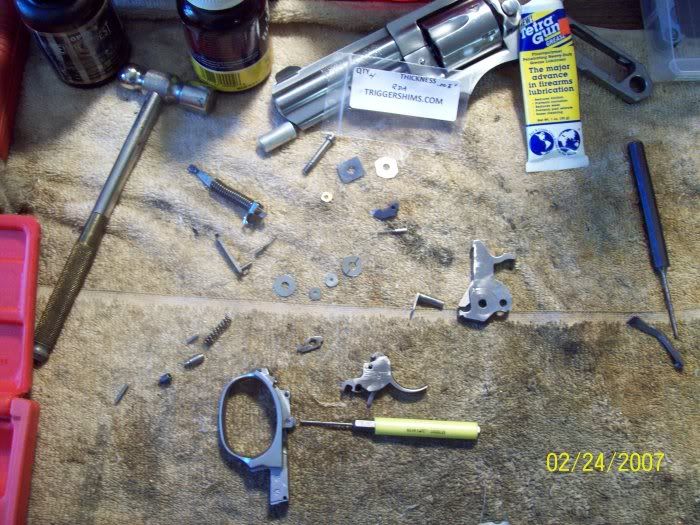HisDudeness
New member
I did some research regarding spring changes on my GP100 and I would like to pick your brains a bit. From what I've read the stock springs are 14 lb hammer and 12 lb trigger. From what I gather the hammer spring is responsible for the primer strike pressure itself and the trigger reset spring, hence the name, is responsible for resetting the trigger after firing. I've also read that changing the hammer spring can improve DA trigger pull while changing the trigger spring can improve SA trigger pull. A couple points before I get to my questions:
-This IS my home defense gun of choice.
-We ONLY fire this revolver DA so I'm not too concerned with SA trigger performance.
-I use this gun just about weekly at the range and I would like to improve the DA trigger for my wife. She has improved her accuracy tremendously since I turned her on to shooting but I figured why not try for more. I started her with 22LR until she was no longer intimidated by the GP100.
Now being that this is a revolver, should I keep the trigger spring stiff while reducing the hammer spring weight? I figured a failure to reset the trigger would be disastrous while a failure to fire might be corrected by simply pulling the trigger a second (or third) time. I guess I'm looking for a compromise between a lighter DA trigger and dependable reliability. I realize that everything is a compromise but please let me know if I am off base here. I've seen recommendations of 12 lb hammer and 10 lb trigger or 10 lb hammer and 8 lb trigger. I use high quality factory .38 ammunition for home defense, would staying away from CCI primers aid in reliability with a reduced spring weight? If you have personal experience with changing springs in your GP100 how have your results been?
Thank you in advance.
-This IS my home defense gun of choice.
-We ONLY fire this revolver DA so I'm not too concerned with SA trigger performance.
-I use this gun just about weekly at the range and I would like to improve the DA trigger for my wife. She has improved her accuracy tremendously since I turned her on to shooting but I figured why not try for more. I started her with 22LR until she was no longer intimidated by the GP100.
Now being that this is a revolver, should I keep the trigger spring stiff while reducing the hammer spring weight? I figured a failure to reset the trigger would be disastrous while a failure to fire might be corrected by simply pulling the trigger a second (or third) time. I guess I'm looking for a compromise between a lighter DA trigger and dependable reliability. I realize that everything is a compromise but please let me know if I am off base here. I've seen recommendations of 12 lb hammer and 10 lb trigger or 10 lb hammer and 8 lb trigger. I use high quality factory .38 ammunition for home defense, would staying away from CCI primers aid in reliability with a reduced spring weight? If you have personal experience with changing springs in your GP100 how have your results been?
Thank you in advance.

